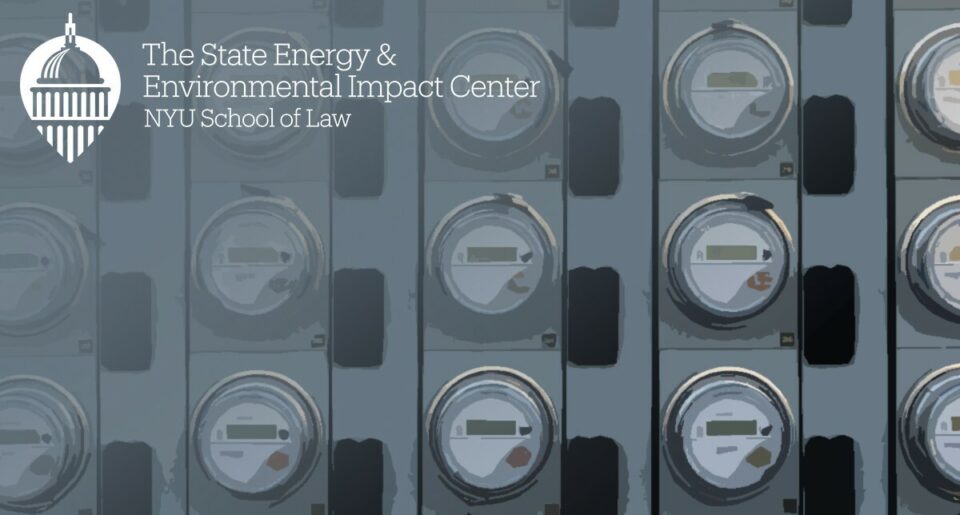Another Swing for Demand Response at FERC
Jessica Bell (Energy Director & Deputy Director) / November 3, 2020

Starting over a decade ago, the Federal Energy Regulatory Commission (FERC) has taken a series of actions to increase the ability of distribution-connected resources to participate in wholesale power markets. In 2008 FERC ruled that demand response resources can participate in interstate wholesale markets, but only so long as states (or another regulatory authority, as applicable) allow them to do so. More recently, FERC has taken actions to remove barriers to participation in wholesale markets for electric storage and other distributed energy resources without including this “opt-out.” Opening up interstate sales to these resources encourages innovation and competition in the burgeoning clean energy market. Now, a demand response aggregator is asking FERC to revisit its policy of allowing opt-outs that block demand response participation in wholesale markets, arguing that it is unjust and unreasonable and unduly discriminatory.
Background. In Order No. 719 in 2008, FERC sought to increase competition in wholesale electric markets through the participation of demand response, an intentional reduction in a customer’s use of energy. Customers are paid for this reduced consumption, which can be a particularly useful tool for the grid operator during peak periods where demand for electricity taxes the grid, but is also increasingly seen as a regular resource comparable to battery storage. An aggregator of demand response bids the commitments of a group of customers to reduce electricity usage into the wholesale market, just like a bid from a generator to supply electricity.
Order No. 719 required wholesale market operators – Regional Transmission Organizations and Independent System Operators (RTOs/ISOs) – to accept bids from demand response aggregators unless the responsible regulatory authority prohibits that participation. This regulatory authority may be the state utility regulator or another entity in the case of public power and cooperative utilities.
Over time, FERC worked to open wholesale markets to the participation of other clean energy resources. Following a petition for a declaratory order in 2017, FERC found that it has exclusive jurisdiction over the participation of energy efficiency resources in wholesale markets. And in Order No. 841, FERC issued an order to remove barriers to the participation of electric storage resources in wholesale markets. In neither proceeding did FERC adopt an opt-out as it did in Order No. 719. Earlier this year, the D.C. Circuit upheld the absence of an opt-out in Order 841. As attorneys general said in support of the order, this action is consistent with the complementary federal-state relationship under the Federal Power Act. They also noted the important role for energy storage in decarbonizing the energy system, and the benefits of allowing these resources to participate in wholesale markets on equal footing with traditional electricity sellers.
Recently, FERC issued Order No. 2222 to promote the participation of the broad category of distributed energy resources (DERs) in RTO/ISO markets. While much of the implementation details will be worked out in stakeholder processes in each RTO/ISO, FERC continued not to have an opt-out for state regulators. (Although FERC did include an opt-out for small utilities.) FERC did, however, specifically maintain Order No. 719’s opt-out for demand response resources, which are included within the broad definition of DERs.
New challenges to the demand response opt-out. Now, groups have asked FERC to revisit the opt-out as to demand response in Order No. 719. There is a request for rehearing pending on this issue, as well as a separate complaint brought against the Midcontinent Independent System Operator, Inc (MISO) by Voltus Inc., a provider of demand response services to commercial and industrial customers and represented by Earthjustice.
MISO’s footprint includes all or parts of fifteen states across the Midwest and South. The majority of customers in MISO are served by vertically-integrated monopoly utilities. Voltus reports that in all but three of the fifteen states that are all or partially in MISO, aggregators of demand response that are not acting on behalf of a utility are barred from directly participating in MISO. Voltus details that its operations in MISO are quite limited because of opt-outs. It submits evidence that it could be delivering over 9,000 MW of demand response in MISO states if not for the opt-outs. If it were allowed to compete against demand response programs provided by monopoly utilities, it states that it would save ratepayers $130 million per year and that its technology platforms would provide better service than utility demand response programs.
Voltus makes three primary arguments in support of the relief requested. First, it states that allowing states to act as a gatekeeper to prevent resources from participating in RTO/ISO markets is inconsistent with the state/federal jurisdictional line in the Federal Power Act. Second, it points out that the opt-outs under Order No. 719 have become a significant barrier to competition in the wholesale market, impeding innovation that will help ensure just and reasonable rates. Third, the opt-out is unduly discriminatory as there is no such limitation on the participation of other distributed energy resources, storage, and energy efficiency. Further, the opt-outs in MISO are discriminatory because they effectively treat demand response aggregators differently from utility-affiliated demand response programs.
While this complaint alleges facts specific to MISO, the legal theory would apply across the RTOs/ISOs. Voltus also asks FERC to issue a notice or proposed rulemaking to repeal the opt-out provisions of its regulations.
Comments on the complaint are currently due November 9; the FERC docket is EL21-12. Voltus has asked FERC to act quickly to allow it to participate in MISO’s next capacity auction in March.
UPDATE 11/4/20: FERC has extended the comment deadline to November 19.
This page was updated on February 11, 2024 to better meet our accessibility standards. To see the page as it was initially published, click here.
